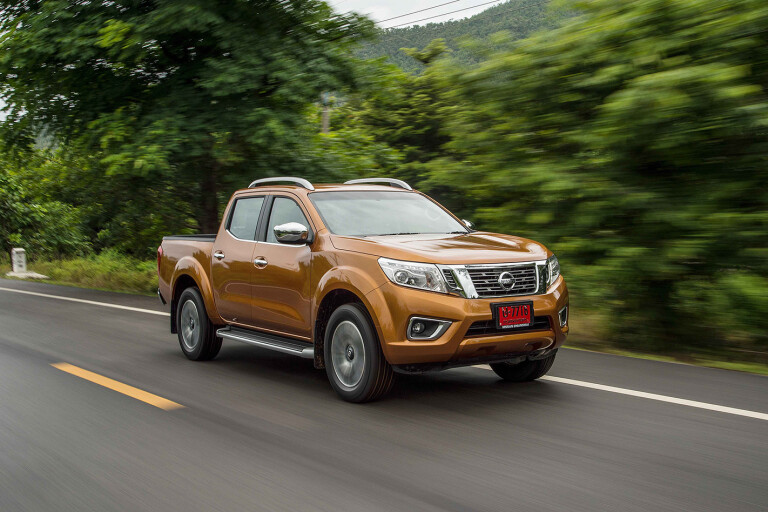
THE new generation D23 Navara will be launched in Australia early next year, with a 2.3-litre four-cylinder diesel. Some 200cc smaller than the previous generation D40 diesel engine, Nissan must convince Australians it’s tough enough despite the capacity cut.
This is a new generation of the Nissan/Renault alliance engine and will also be used in Renault vans. The 2.3-litre unit will be available as a twin turbo, producing 140kW and 450Nm, or as a single turbo delivering 118kW and 403Nm. For the record, the twin-turbo 2.3L matches the power and torque figures of the previous D40’s 2.5 litres but with a steeper torque curve.
While the D40 Navara was also available with a rip-snorting 550Nm V6 diesel, there are no V6 plans this time around. However, Nissan insiders say a larger capacity four-cylinder turbo diesel is under development – thanks largely to a push from Nissan Australia – and the Thai-made D23 will be available with a 2.5-ltre four-cylinder petrol unit, producing 118kW and 231Nm.
Wheels tested the four-wheel drive high output diesel crew cab Nissan Navara in Thailand, with both the six-speed manual and seven-speed torque converter automatic, and there’s a lot to like.
The D23 is vastly better than the D40, which was introduced all the way back in 2005. Its chassis frame is carried over, as is the front suspension, but Nissan has introduced a multi-link coil-sprung rear for crew cab versions, with a steel tub. It is the first volume-selling workhorse ute to offer this; the more basic cab chassis and regular single cab models still get a leaf-sprung tail.
The multi-link rear handled some pretty bad roads very well and the engine offered ample torque, albeit unloaded and not towing.
It also did extremely well off-road, with very few kickbacks or jolts coming through the steering wheel. The steering itself is from the same school as Nissan crossovers – heavy and not keen on precise corrections – but that’s not a deal-killer in this segment.
The twin-turbo 2.3-litre diesel is a marked improvement over the old 2.5, which always sounded like it was working harder than it should. Low-down torque is excellent and it was able to pull up some steep hills in third gear. The manual is a quality unit, probably the best in class, with a pleasantly light clutch.
But city slickers or those heading off road should consider the seven-speed automatic, which is heaps better than the sloppy five-speeder of the old Navara.
The only problem is its tendency to hit a super-high gear at lower speeds to aid fuel economy – it can sound unpleasant at around 1200rpm.
Nissan hasn’t locked in the towing capacity for the new Navara in Australian spec, but is gunning for the 3500kg bar set by the best in class and it’ll need that in order to be taken seriously. The payload for all Navaras will be more than 1000kg.
The 220mm ground clearance is good, while a wading depth of 600mm seemed decent until the Ford Ranger and Mazda BT-50 managed 800mm.
The 4WD models run a part-time centre-locking all-paw system, and off-roaders will be able to opt for an electronic locking rear differential.
Safety systems include six airbags, with curtain ’bags to protect rear passengers, plus Electronic Stability Control, while a rear camera will be available in some markets.
Nissan hit the design jackpot with the D40, the clean and muscular look staying fresh for a long time. For this generation, the designers have come up with a truck that has presence but also looks a bit generic. It does, however, look better than the BT-50, as it should.
Inside, it’s a massive jump up from the dated D40 cabin, with essentially the same dash and layout as the X-Trail and Pathfinder. The only differences are the hard plastic surfaces, but the design and layout would impress passenger car customers.
Interior space is similar to the previous model, despite a wheelbase reduction of 50mm. The rear seats are comfortable and rear passengers get their own vents and cupholders.
We’ll have to wait for a local test to rate it against the class-leading Ranger and Volkswagen’s 2.0L Amarok, but first impressions suggest it will be near the pointy end of the pack.

COMMENTS